Posts Tagged ‘heartworm prevention’
National Mutt Day: Here Are Some Ways To Celebrate
 Question of the month. What do Higgins ( the dog from the film Benji) , Laika ( the Soviet space dog), Pluto (Mickey Mouses’s pet dog) and Clifford the Big Red Dog all have in common? Believe it or not, they are all famous mixed-breed dogs and on July 31, it is National Mutt Day.
Question of the month. What do Higgins ( the dog from the film Benji) , Laika ( the Soviet space dog), Pluto (Mickey Mouses’s pet dog) and Clifford the Big Red Dog all have in common? Believe it or not, they are all famous mixed-breed dogs and on July 31, it is National Mutt Day.
National Mutt Day, also known as National Mixed Breed Dog Day, is a day dedicated to celebrating mixed breed dogs and raising awareness about their value as pets. It is observed on two different dates throughout the year: July 31st and December 2nd.
On National Mutt Day, people are encouraged to adoopt mixed breed dogs from animal shelters and rescue organizations rather than buying from breeders. The day aims to promote the adoption and well-being of mixed breed dogs and to combat the stigma and misconceptions surrounding them.
Mixed breed dogs, often referred to as mutts, are dogs that have a combination of different breeds in their ancestry. They can exhibit a wide range of characteristics, both in terms of appearance and temperament. Adopting a mutt can be a rewarding experience, as they often have unique and diverse traits.
If you are interested in celebrating National Mutt Day, you can consider doing the following:
- Visit your local animal shelter or rescue organization: Spend some time with the mixed breed dogs available for adoption, and consider bringing one into your family if it is the right fit for you.
- Volunteer at an animal shelter: Offer your time and help by volunteering at a local shelter. You can assist with walking the dogs, cleaning their encolosures, or providing general care.
- Spread awareness: Use your social media platforms to share information about National Mutt Day and the benefits of adopting mixed breed dogs. Encourage others to consider adopting a mutt or donate to local animal welfare organinzations.
- Organize an event: Consider organizing an event in your community that promotes adoption and celebrates mixed breed dogs. This could include activities such as doggie playdates, training sessions, or informational sessions about responsible pet ownership.
Here at Olsen Veterinary Clinic, we take pride in taking care of EVERY animal, no matter the breed or type. If you have any questions about your pet, don’t hesitate to contact our office today!
New Puppy Checklist: Everything You Need Before Welcoming Your New Furry Friend into Your Life
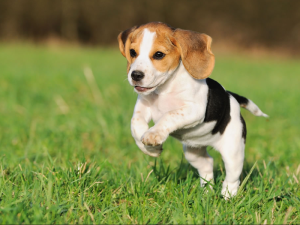 Bringing a new puppy into your home is an exciting time but requires some preparation for your home. Puppies require a lot of attention and care, so this checklist will be beneficial if you are unsure where to start with the basics for your new puppy.
Bringing a new puppy into your home is an exciting time but requires some preparation for your home. Puppies require a lot of attention and care, so this checklist will be beneficial if you are unsure where to start with the basics for your new puppy.
Some companies have created puppy starter kits. For example, this box made by Chewy has a set of toys, treats, and potty-training materials to help you with your new puppy. All top-rated items, new puppy owners are sure to appreciate it. It also makes a great gift. It can be found here.
Beyond toys, treats, and potty-training materials, puppies need food and water bowls. There are a lot of different options, but one that is slightly lifted is easier for your puppy to eat from. If you get one with walls, it is more likely your floor will stay cleaner.
Also necessary is a bed for your pet. An elevated bed is good for keeping your dog lifted and is helpful for teaching different cues. Other more traditional options are great too, especially as your pups are growing quickly.
Some owners choose to crate their puppies, and there are a lot of options but must be replaced as dogs grow. Crates help dogs have a safe place, especially as they adjust to a new space and lifestyle.
Also important for your new puppy is a leash. There are many kinds of leashes, with different uses. It will most likely be trial and error to find what works for you and your puppy, so be prepared for a trial period.
Puppies require hygiene efforts. This includes toothbrushes, toothpaste, nail clippers, brushes, and bathing supplies. Providing exposure to these items while young makes it less scary for adult dogs and easier for their owners.
Lastly, a collar is a great way to express your and your pet’s personality. Be prepared for your new pup with a collar and tag to provide some protection and peace of mind.
The last step for a new puppy is establishing an appointment with your veterinarian to get started on vaccinations and discuss your new dog’s life! Feel free to contact Dr. Olsen of Olsen Veterinary Clinic at 618-656-5868 to set up an appointment or discuss any questions!
Seatbelts For Dogs – What You Need To Know
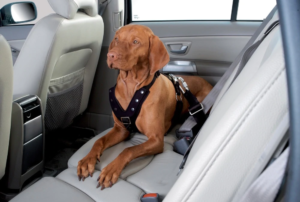 When you get into the car, you think about bucking yourself up. Your dog is most likely not getting their own seatbelt. In fact, 84 percent of pet owners don’t restrain their dogs on car trips according to a survey done by AAA. Even if you think you have the calmest dog in the world, your dog does need a seat belt. It helps keep them and the driver safe.
When you get into the car, you think about bucking yourself up. Your dog is most likely not getting their own seatbelt. In fact, 84 percent of pet owners don’t restrain their dogs on car trips according to a survey done by AAA. Even if you think you have the calmest dog in the world, your dog does need a seat belt. It helps keep them and the driver safe.
When dogs are restrained or contained in the car, they can’t distract the driver as much. According to the CDC, nine people are killed and 1,000 more injured because they were distracted while driving every day. While cell phones are the biggest distracter, your pet can be a major attention grabber too. Roughly two out of three dog owners admit to being distracted by their pup in the car. If you are in an accident, a dog without a seatbelt can turn into a deadly projectile. A ten-pound dog exerts 500 pounds of force during a 50-mph collision while a 60-pound dog becomes a 2,700-pound projectile at 35-mph. Overall, a dog without a seatbelt can cause serious damage in an accident.
Some states require pet restraint laws. So far, only three have laws that require your dog to buckle up in the car, Rhode Island, Hawaii, and New Jersey. Others forbid pets from riding in the back of pick-up trucks or on a driver’s lap. While Illinois does not have any specific pet restraint laws, you can still get a ticket for distracted driving if you get pulled over and your dog is not restrained. The safest place for dogs is in a carrier or harness in the back seat. Just as an airbag can damage a child, the same is for your pet. To get your pet used to a harness, start slowly with five-minute trips, and then expand to ten- and 15-minute rides. Eventually your dog will get used to it. During the outing, be sure to give your dog plenty of praise and a treat after the run.
When you get into the car, you think about bucking yourself up. Your dog is most likely not getting their own seatbelt. In fact, 84 percent of pet owners don’t restrain their dogs on car trips according to a survey done by AAA. Even if you think you have the calmest dog in the world, your dog does need a seat belt. It helps keep them and the driver safe. When dogs are restrained or contained in the car, they can’t distract the driver as much. According to the CDC, nine people are killed and 1,000 more injured because they were distracted while driving every day. While cell phones are the biggest distracter, your pet can be a major attention grabber too. Roughly two out of three dog owners admit to being distracted by their pup in the car.
If you are in an accident, a dog without a seatbelt can turn into a deadly projectile. A ten-pound dog exerts 500 pounds of force during a 50-mph collision while a 60-pound dog becomes a 2,700-pound projectile at 35-mph. Overall, a dog without a seatbelt can cause serious damage in an accident.
Some states require pet restraint laws. So far, only three have laws that require your dog to buckle up in the car, Rhode Island, Hawaii, and New Jersey. Others forbid pets from riding in the back of pick-up trucks or on a driver’s lap. While Illinois does not have any specific pet restraint laws, you can still get a ticket for distracted driving if you get pulled over and your dog is not restrained.
The safest place for dogs is in a carrier or harness in the back seat. Just as an airbag can damage a child, the same is for your pet. To get your pet used to a harness, start slowly with five-minute trips, and then expand to ten- and 15-minute rides. Eventually your dog will get used to it. During the outing, be sure to give your dog plenty of praise and a treat after the run.
It may be tempting to have your dog ride shotgun with you, but for their safety and yours, keep them buckled up in the back. With any questions, feel free to contact Dr. Olsen at Olsen Veterinary Clinic at 618-656-5868!
Dr. Olsen’s Breed Spotlight: The Irish Wolfhound
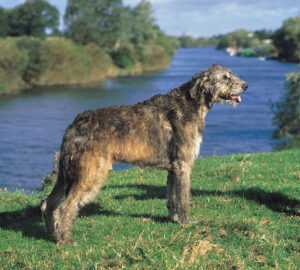 For this next breed spotlight, I will be introducing you to the Irish wolfhound, likely for the first time. This dog is calm, dignified, and the tallest breed of dog (sorry Great Danes). Early ancestors of Irish wolfhounds were fearless, big-game hunters who could dispatch a wolf in single combat. Today, they are the most serene and agreeable of companions.
For this next breed spotlight, I will be introducing you to the Irish wolfhound, likely for the first time. This dog is calm, dignified, and the tallest breed of dog (sorry Great Danes). Early ancestors of Irish wolfhounds were fearless, big-game hunters who could dispatch a wolf in single combat. Today, they are the most serene and agreeable of companions.
The amiable Irish Wolfhound is an immense and muscular hound. They are built along classic Greyhound lines, capable of great speeds at a gallop. A male might stand nearly three feet at the shoulder and can weigh up to 180 pounds. Females will run smaller but are still a very large dog. They have a rough and hard coat that can come in many colors. They can be white, gray, brindle, red, black, and fawn. Irish wolfhounds are way too serene to be fierce guard dogs, but the mere sight of the size of these dogs are enough to deter intruders. Irish wolfhounds are characteristically patient with kids, but their size does require supervision when they are around small children.
The history of this wolfhound goes back to the breeding of indigenous large dogs of Britain to the Middle Eastern coursing hounds that were bartered around the known world in the earliest days of international trade. By the time the Roman Empire had gained a toehold in the British Isles, the giant hounds of Ireland were already long established. In the year 391, the Roman consul received a gift of seven of these hounds that “all Rome viewed with wonder”. These majestic hunters, whose motto was “gentle when stroked, fierce when provoked”, were used on such quarry as the now-extinct Irish elk, a massive, ferocious beast said to stand six feet at the shoulder. In 15th-century Ireland, wolves were overrunning the countryside. The Irish hounds, already renowned big-game hunters, began to specialize on wolves. By the late 1700s, when wolves and other big-game animals of Ireland were hunted to extinctions, Irish wolfhounds lost their job and nearly went extinct themselves. This is a case of a breed doing its job too well for its own good. In 1862, British army captain George Augustus Graham began scouring the country for remaining specimens of Ireland’s national hound. Graham made it his life’s work to protect, standardize, and promote the breed. Today, his name is still spoken with reverence wherever Irish wolfhound fanciers gather.
The coats of Irish wolfhounds have two layers; the outer being harsh and wiry with the under being very soft. They shed throughout the year, but not in an excessive amount. Unlike many other double-coated breeds, Irish wolfhounds don’t “blow out” their coats during an annual or semi-annual shedding season. Irish wolfhounds retain a strong instinct to hunt and chase prey, so they should only be allowed off the leash in areas that are securely fenced. As adults, Irish wolfhounds can become couch potatoes if allowed to, but regular exercise like long walks and play sessions help keep them physically and mentally healthy. A home with a large, fenced area is necessary to provide the environment needed for this breed to thrive. The breed can also exercise mind and body by participating in canine sports like tracking, agility, and lure coursing.
These gentle giants are sure are a breed with a rich history. Their ancestors’ traits reveal themselves with their passion for hunting and need for mental and physical exercise. Generally, these dogs make excellent companions for anyone with enough land to satisfy their need to run. With any questions, please feel free to contact Dr. Olsen at 618-656-5868.
Why You Should Keep Your Pets Away from the Table This Thanksgiving
 With Thanksgiving approaching, there is no doubt that you pup is going to want to partake in the festivities. However, feeding your pup even a few tasty treats from the table is definitely not the way. More often than not, table food is typically too fatty for a dog’s digestive system and can result in severe stomach upsets. To keep your dog safe and healthy this holiday season, keep the following in mind.
With Thanksgiving approaching, there is no doubt that you pup is going to want to partake in the festivities. However, feeding your pup even a few tasty treats from the table is definitely not the way. More often than not, table food is typically too fatty for a dog’s digestive system and can result in severe stomach upsets. To keep your dog safe and healthy this holiday season, keep the following in mind.
Oily and fatty foods, which are often found on OUR tables, can lead to severe dog health problems such as diarrhea, vomiting, and pancreatitis. Even worse, there are several people foods that can be toxic to dogs. For example, onions or any food prepared with them are unsafe for dogs and should never be given to them. Moreover, dogs that are constantly fed with table scraps have the tendency to become dependent on them. Dogs that eat table scraps may start refusing to eat regular dog food. Feeding your pet with table scraps can also cause them to develop bad behaviors such as begging. If you wish to reward your pet for good behavior, give them treats made for them.
If for some reason you just cannot stop feeding your pet table scraps, follow the following rules:
No junk food! Never feed your dog junk foods such as fries, potato chips, leftover pizza, or candies. Your dog should only get healthy food items like steamed or baked potatoes, plain rice, oatmeal, bits of cooked chicken or turkey, finely chopped or steamed unseasoned veggies and certain fresh fruits.
Moderation is key! If you like giving your dog healthy people food, don’t forget to factor his meals into his daily calorie requirement, then, feed your pooch less of their own dog food so they don’t gain weight. Be sure to balance their diet since your dog still needs their regular food. Just try giving less of it on times when you are feeding him with healthy table scraps.
Watch out for toxic food! Above all, you should avoid foods that have been found to be poisonous to dogs. These include, for example, raisins, onions, chocolate, cooked bones, fruit pits, and walnuts. For a more complete list, check it out here.
If you wish to feed your dog human food, a great way to do it is to cook a recipe specifically designed for dogs. These often include scraps that pose no harm to your dog, including rice, cooked eggs, carrots, cheese, peanut butter, berries, chicken, green beans, seedless watermelon, and bananas.
As always, feel free to reach out to Olsen Veterinary Clinic with any questions at 618-656-5868.
Dr. Olsen’s Breed Spotlight: The Peruvian Inca Orchid
 The Peruvian Inca Orchid is not a flower, but a hairless sighthound that developed in Peru. The breed can be hairless or coated and can be found in a range of sizes. These dogs are good hunters and do well in agility. In the hairless variety, the skin can be of any color. The coated variety features all colors as well including black, brown, pink, tan, and white. On a sunny day, Peruvian Inca Orchids require sunscreen because of their exposed skin.
The Peruvian Inca Orchid is not a flower, but a hairless sighthound that developed in Peru. The breed can be hairless or coated and can be found in a range of sizes. These dogs are good hunters and do well in agility. In the hairless variety, the skin can be of any color. The coated variety features all colors as well including black, brown, pink, tan, and white. On a sunny day, Peruvian Inca Orchids require sunscreen because of their exposed skin.
The ancient history of the Peruvian Inca Orchid can be told through pottery and textiles. The breed first appeared in Moche pottery in 750 AD. The Chancay people used the dogs as companions, and certain pottery even depicts them in sweaters. The Chimu considered them good luck and used the dogs’ warmth for the treatment of arthritis and respiratory conditions.
The original hairless dogs were small companion animals, but when Peru was conquered by the Conquistadors, the small dogs were interbred with the dogs of the foreigners and over the years, three distinct sizes developed. In the mountainous regions, the Andean people protected the dogs, but the breed did not fare well in the cities along the coast. There, the hairless dogs were considered diseased and were often exterminated.
In 1966, an American, Jack Walklin, visited Peru and brought eight dogs back to the US. He is believed to be the one to have named the breed the Peruvian Inca Orchid and the breed was established under that name in the US and Europe. In 2001, Peru declared the breed a National Patrimony and the dogs are now protected in Peru.
Peruvian Inca Orchids come in a range of sizes with the smallest standing just short of 10” and the largest topping out at 26”. The distinguishing feature of a Peruvian Inca Orchid is their hairlessness. Their skin can be a solid color or spotted with unpigmented areas. Peruvian Inca Orchids that are coated are in the minority and can occur in the same litter with hairless Peruvian Inca Orchids.
Peruvian Inca Orchids are slim dogs who are very noble and affectionate to those close to them. At the same time, Peruvian Inca Orchids are lively, alert, and can be wary of strangers. Peruvian Inca Orchids make good watch dogs. Peruvian Inca Orchids are loyal and protective of their family but like all dogs should be supervised around children. If you have small pets, the Peruvian Inca Orchid might not be the dog for you as Peruvian Inca Orchids might mistake your small pet as prey.
How To Protect Your Pet From The Heat
 Protecting your pet from the heat is extremely important. As temperatures rise, it becomes more and more uncomfortable to be outside. This is true for your dog as well. During the summer, it is healthier for your dog if you limit outside time, time in dog parks, and exercise to cooler parts of the day, such as morning and evening times. It is not always the temperature as well. The humidity can cause your dog to have difficulty panting. Panting helps your dog cool itself off. Without being able to pant, your dog’s temperature can rise that can lead to heatstroke. If your dog is exhibiting any of the signs of overheating (heavy panting, heavy drooling, trouble breathing, rapid heartbeat, dark or red gums and tongue, dizziness, and weakness, or agitation), be sure to bring your dog to the vet right away. To avoid overheating, there are multiple things that you can do to keep your puppy cool during the hot summer.
Protecting your pet from the heat is extremely important. As temperatures rise, it becomes more and more uncomfortable to be outside. This is true for your dog as well. During the summer, it is healthier for your dog if you limit outside time, time in dog parks, and exercise to cooler parts of the day, such as morning and evening times. It is not always the temperature as well. The humidity can cause your dog to have difficulty panting. Panting helps your dog cool itself off. Without being able to pant, your dog’s temperature can rise that can lead to heatstroke. If your dog is exhibiting any of the signs of overheating (heavy panting, heavy drooling, trouble breathing, rapid heartbeat, dark or red gums and tongue, dizziness, and weakness, or agitation), be sure to bring your dog to the vet right away. To avoid overheating, there are multiple things that you can do to keep your puppy cool during the hot summer.
To begin, make sure to keep your dog groomed, especially if they have long fur. Each breed has different needs. For example, dogs with short, thin coats handle heat better than cold weather and mountain dogs. No dog is immune to heatstroke or paw pad burns, so it’s important to keep your dog groomed. If you get any mats and tangles out of their fur, it will help keep them cool. However, don’t shave or clip their coat until you talk to your vet or groomer. The extra fur that helps your dog stay warm in the winter may also keep it cool in the summer. To keep your dog’s paw pads safe, stick to shaded areas or bring insulation booties to protect your dog’s feet from the hot pavement. To test the heat of the pavement, feel it with the back of your hand. If it is too hot for you, then it is definitely too hot for your dog.
Similarly, be sure to keep your dog’s shots up to date, especially in the summer. The parvovirus spreads in hot weather. During the summer, your dog probably spends more time outside which means that it could come in contact with an animal that has rabies. Summer is also a high season for fleas and mosquitos, both which carry many diseases. By giving your dog medication to prevent these pests, your dog will be safer in the long run.
This should go without saying but leave your pet at home unless your destination is pet friendly. Do not leave your pet in your car. Even with the windows of your car cracked, the temperature inside the car rises rapidly in the summer heat. Similarly, keep your dog’s water supply full. Be sure that there are multiple bowls available for your dog that are always filled with fresh water that is clean. Even if you think that the walk you are going on will be short, be sure to bring clean drinking water and a dish that your dog can easily drink from. If you are worried that your pet is not drinking enough water, add some ice cubes to the bowl. It will make drinking water more appealing to dogs.
When you are spending days outside by a pool or a lake, you can do many things to keep your dog cool while you enjoy the summer sun. You can freeze containers of water so that they will stay cooler for longer. Be sure to keep their water in the shade. You can also provide a small kiddie pool or a sprinkler for your dog to play in. These allow fun places for your dog to cool off and maybe even get some exercise. Similarly, you could put a pet-friendly dig area for your dog in your yard. These can include a sandbox area that your dogs are able to dig in. Dogs often dig a hole to sit in and keep cool. To make an even cooler area, you can spray sand with your cold water. Be sure to make sure that it is located in the shade and not in the sun.
Sometimes, a little extra help is needed to cool your dog. Dog cooling mats and cooling vests are great products. Many work by soaking them in cool water for a long time. If you don’t have access to these, you can soak a towel in cool water and let your dog lie on it. You can also spray your dog’s belly and paws to cool them down. Dogs will cool down more quickly through their belly and paws than water sprayed on their back. Another great DIY to keep your dog cool is to put a pan of ice water in front of the fan to make it more effective for your pup to stay cool.
There are many similar DIYs to keep your pet cool in the summer. Dog-Safe ice cream exists, and you can make it at home. Here is a big list of easy to make ice creams that won’t cost an arm and a leg unlike the gourmet pet store ice-creams. You can also make some frozen treats to put in your dog’s favorite toy. Kong toys come in all shapes and sizes because all dogs love them. They are tough rubber chew toys that are meant to be filled with yummy sticky treats like peanut butter to keep your dog occupied for a while. There are pet-friendly recipes available that are meant to be frozen to keep your dog refreshed while they lick the center. Similar to the Kong treats, you can freeze your dog’s favorite treats in a popsicle mold and fill it with water. It will give your dog a fun treat to keep them cold.
The summer gives many fun opportunities for you and your family. You wouldn’t allow a member of your family to overheat, so don’t let your dog (a furry family member). By following the simple rules of pet care and making some fun treats that your dog will enjoy, you and your dog can have a healthy and cool summer! Make sure to contact our office if you have any questions!
Everything You Ever Wanted To Know About Pet Vaccines
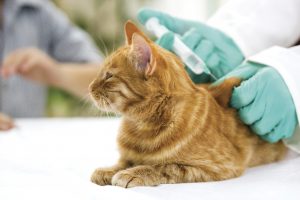 Pet vaccines are important, and they have a long history. Probably the most important technological gains were discovered in the 1790’s by Dr. Edward Jenner. He discovered the first vaccination by giving people a preparation of material from cowpox, which was a common animal disease in cattle. The people that were injected with or “vaccinated” with the material did not get sick and remained healthy when they were exposed to the deadly smallpox virus. Over 100 years later, a French scientist by the name of Louis Pastuer, found that they could protect people and animals from disease by injecting altered forms of microorganisms.
Pet vaccines are important, and they have a long history. Probably the most important technological gains were discovered in the 1790’s by Dr. Edward Jenner. He discovered the first vaccination by giving people a preparation of material from cowpox, which was a common animal disease in cattle. The people that were injected with or “vaccinated” with the material did not get sick and remained healthy when they were exposed to the deadly smallpox virus. Over 100 years later, a French scientist by the name of Louis Pastuer, found that they could protect people and animals from disease by injecting altered forms of microorganisms.
The process of how a vaccine works is a complex reaction that involves many chemical and cellular reactions within and between the immune system cells of the body. Basically the role of the vaccine is to expose the immune system of the pet to viral and bacterial antigens that are contained in the vaccine. In the future, when the pet is exposed to that related organism, the body will recognize it and then activate the immune system to prevent the disease from producing or reducing the signs of clinical disease.
Vaccines can be administered by subcutaneous or intramuscular injections, intranasal or orally. The vaccines that are injected or given orally tend to produce a more systemic or whole body response, whereas the intranasal provides a more local response. Intranasal vaccines can be advantageous to provide a quicker response and prevent or kill the new virus before it can get any further in the body. Local nasal vaccines would not be helpful for a virus that has been ingested and causes intestinal disease such as parvovirus in dogs. For that we would want a vaccine that would produce a more systemic response.
The vaccines that we use in veterinary medicine are most generally either a killed or a modified live (attenuated) vaccine. There are multiple indications for both, but generally speaking the killed vaccines are safer and unlikely to cause disease in the immunocompromised pet. Whereas, the live vaccines provide a more amplified response that leads to a better, longer lasting immune protection. Several of the vaccines that we use have many different viruses in one injection. This allows to vaccinate for several of the organisms in one injection.
To confuse you even more, pets get some protection through the placenta when the puppies and kittens are in the mother’s uterus and when they get colostrum which is the first milk that they drink. This protection will decrease over time and usually will be low enough by 12 weeks of age where vaccinations will start reacting. There is no way to measure quick, easy and inexpensive way to measure the immunity gained here, so we generally recommend starting vaccines at 6 to 8 weeks of age and then booster them every 2 to 4 weeks until they are 16 weeks of age. Generally, it is not the number of vaccinations that they get, but when they get them at their chronological age.
A vaccine helps prime an animal against a specific disease. It does this by stimulating the immune system with a nonpathogenic virus or bacteria. If the animal responds adequately, it will develop cells that will help it to quickly and efficiently fight off the pathogenic form of the agent if it is encountered later. Here at Olsen Veterinary Clinic, we have tailored our vaccination programs to meet the needs of your pet. If you have any questions please feel free to contact us here, or call our office at 618-656-5868.
Summer Dangers For Pets
 Oh the dog days of summer. What’s not to like about summer? Vacations, cookouts, swimming—can it get any better than that? Wait a dog gone minute though. These fun times can be hazardous to your pets, so care must be taken to make sure that they don’t succumb to the dangers that can be lurking. Accidents can happen almost anytime and anyplace so it is important to be aware of how to prevent them from happening. These can include but not be limited to heat stroke, swimming pools, venomous pests, campouts, bbq and other foods just to name a few. So let’s cover a few dangers to avoid and try to prevent.
Oh the dog days of summer. What’s not to like about summer? Vacations, cookouts, swimming—can it get any better than that? Wait a dog gone minute though. These fun times can be hazardous to your pets, so care must be taken to make sure that they don’t succumb to the dangers that can be lurking. Accidents can happen almost anytime and anyplace so it is important to be aware of how to prevent them from happening. These can include but not be limited to heat stroke, swimming pools, venomous pests, campouts, bbq and other foods just to name a few. So let’s cover a few dangers to avoid and try to prevent.
Summer Heat
The summer heat can be dangerous to our pets. Dogs are covered with hair, have very few sweat glands, and some breeds have shortened noses that make it tough to keep cool in the summer. So the easiest way to beat the heat is to adjust your walking schedule to the morning hours when it is cooler out. Some dogs may do well with having their haircoat shaved, however breeds like the Husky have a haircoat that also helps keep them cool in the summer.
The heat will also warm up the inside of your car, so if it is above 65 degrees either leave your pet at home or take it inside with you when you leave the vehicle.
Sunburn can also cause some problems, so it may be important to put sunscreen on the pets ears and bare skin to prevent this.
Swimming Pools
What is a better way to beat the heat than swim in a swimming pool? It is great and it also is a good way for your dog to get exercise. Floatation devices are available to assist the pets that are not strong swimmers. But, do not leave them unsupervised. It is important that they be taught how to exit the pool safely before they tire. Also having fresh water for them to cool off with and to remove the chlorine, salt and bacteria that can be harmful to them is beneficial. So keep a bowl handy by the pool.
Fireworks
Almost everyone celebrates the Fourth of July with fireworks. Dogs tend to not like loud noises and can be scared easily. The best advice would be to leave your pets at home inside and away from the flash of the fireworks.
BBQs
Some summer evenings are spent socializing with friends and barbecuing. We all like them, and even our pets are hoping for a few table scraps. A little of this and a little of that can be bad for pets—and not just their waistlines. Some surprising foods like grapes, onions, garlic and raisins, can be toxic to dogs if consumed in large quantities and should stay off their menu. Other barbecue staples like corn on the cob, bones, fruit with pits, skewers or ice cream can be dangerous to our four-legged family members. It may be helpful to talk to guests and children before summer parties and politely remind them that table food could be detrimental to the health of your pet.
Fleas & Ticks
While our the heat puts a strain on our pets, fleas and ticks thrive during this time. They can cause disease and carry other parasites that are detrimental to the health of our pets. Just like humans, pets can have allergic reactions to insect and spider bites. By grooming your pet frequently, you can check for the presence of the pests, hot spots, and other skin problems that can be caused by these pests. There are some very good flea and tick medications out there to prevent the problems before they start, so talk with your veterinarian to see what they would suggest. You can also order directly from our store.
Heartworms
Heartworms are carried by mosquitos, and the summer months are when mosquitos thrive and pose the greatest threat to your pet. The heartworms can be very dangerous to the health of your pet. It is best to have your pet on a medication to prevent your pet from contracting the painful disease. So ask your veterinarian for their recommendations.
These dangers may sound scary, but a little preparation and watchful eye is all you need to take the heat off your summer. If you have any questions, please don’t hesitate to call the Olsen Veterinary Clinic at 618-656-5868, or contact us here.
Parasite Prevention And Your Pet
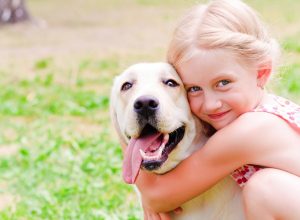 Parasite prevention and your pet is something very important. With summer fast approaching, pet owners are more active with their pets outside. That is where you will find parasites that can infest your pets, several of which can infect people as well. So because of this, parasite prevention is not only important for the health of your pet but also for the health of your family.
Parasite prevention and your pet is something very important. With summer fast approaching, pet owners are more active with their pets outside. That is where you will find parasites that can infest your pets, several of which can infect people as well. So because of this, parasite prevention is not only important for the health of your pet but also for the health of your family.
As a veterinarian, we generally talk about controlling and preventing four major parasite groups—Fleas and Ticks, Intestinal Parasites, and Heartworms.
Fleas and Ticks
Fleas and ticks are troublesome parasites of the skin. Not only are they troublesome because they cause problems with the skin, they also transmit several diseases to your pet. There are many effective products out there that can be purchased from your veterinarian to control and prevent flea and tick infestations. Regular use of these products can prevent fleas and ticks from becoming a problem to your pet. As tempting as it might be to purchase an over the counter product from your pet store or big box store, I would caution you as a pet owner to be very careful. Many of these products can have serious side effects if used improperly and may have limited effectiveness.
Intestinal Parasites
Intestinal parasites can cause pets to vomit, have diarrhea, lose weight, and lead to a poor overall condition of your pet. The most common intestinal parasites in cats and dogs are roundworms, hookworms, whipworms, tapeworms and coccidia. All of these parasites can have the ability to affect your pet. Additionally, some roundworms, hookworms, and some tapeworms can also affect humans. Because of this, pet owners should contact their veterinarian to check on a routine testing schedule and monthly preventatives.
Most parasites cannot be seen with the naked eye in the feces. Your veterinarian can diagnose the infestation by taking a sample of the feces and looking at it under a microscope. The Companion Animal Parasite Council recommends that a fecal analysis be performed 2 to 4 times during a pets first year of life and at least 1 to 2 times per year for adults.
Because your pet can get exposed to intestinal parasites at birth and an early age of life, the CAPC recommends that puppies and kittens should be dewormed every 2 to 3 weeks until they are 12 weeks old and animals that are older should be dewormed at least twice. Once the initial deworming is complete, dogs and cats should be put on a monthly, year-round product that prevents intestinal parasites as well as heartworm infections.
The area where your pet eliminates can become contaminated with intestinal parasite eggs. This can cause reinfection to your pet or exposure and infection of future pets or humans. Immediate removal of the feces from the yard greatly reduces the chance that the property will become contaminated with the intestinal parasite.
Heartworms
Heartworms are a parasite that resides in the heart and is transmitted through the bite of a mosquito. This mosquito is harboring the larva of the heartworm and it is injected with the saliva into the bloodstream of the dog. The larva migrate to the heart where they mature and become adults. Over time, heartworms can cause exercise intolerance, heart failure and respiratory problems in dog. Fortunately, heartworms are preventable. There are several fantastic monthly preventative options available through your veterinarian. When given year-round, these products will provide protection against heartworms and several other intestinal parasites and fleas that can infect dogs, cats and people. Your vet would be a good source to help you decide which product is best for you and your pet.
Here at the Olsen Veterinary Clinic we carry products to protect your pets. Stop in or give us a call and we would help you decide what is best. You are always welcome to contact us here with questions.
